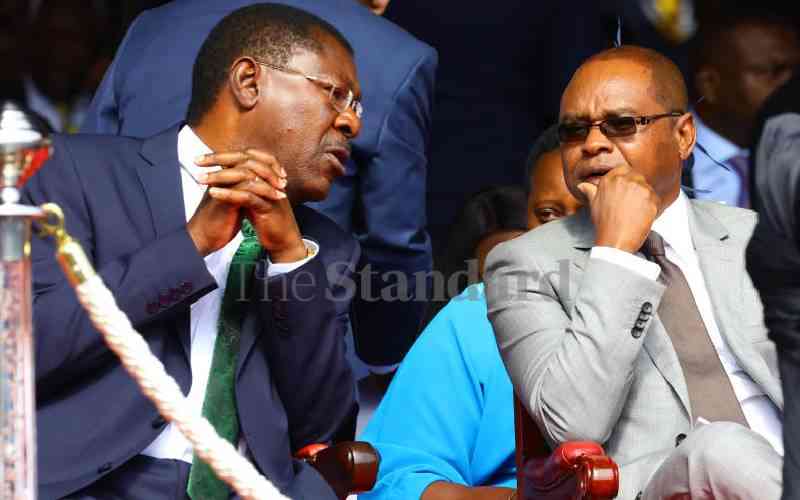By Yussuf Loge
[email protected]
On January 28, President Uhuru Kenyatta called a press conference and his key message was that the Standard Gauge Railway (SGR) project must and will go on.
He invited anyone with evidence against the project to table it before the two parliamentary committees currently investigating the project, Kenya’s biggest ever. The President’s key message here is that while those challenging the project have every right to do so, they should never attempt to take away from the economic imperative of having a SGR to serve Kenya and the region. That even as we interrogate the deals around the project, we must not throw away the baby and bath water.
One of Kenya’s unique selling propositions is its strategic location on the East African seaboard. Mombasa thus serves as a critical gateway to a huge and growing hinterland that stretches all the way from the port city to Kivu. It is an expansive territory that includes Kenya, Uganda, South Sudan, Rwanda, large swathes of eastern DRC, northern Tanzania and, potentially, Ethiopia.
The infrastructure that serves this region and connects it to Mombasa – what is referred to as the Northern Corridor – is a key component of the regional economy. In Kenya alone, economic activity linked to the corridor is estimated to account for a massive 80 per cent of the country’s Gross Domestic Product (GDP). It follows then, that this rich hinterland served by Mombasa known as the Northern Corridor, and which is very crucial for the growth of our overall economy, will only be as efficient as the transport infrastructure within it. On current form, and this is common knowledge, the various elements are not functioning optimally.
Sadly, most of the heavy-duty freight transport within the corridor, at a massive 97 per cent, still relies on a strained and poorly maintained road network. The well-documented underperformance of the existing metre gauge railway network, which has seen no investment or expansion since the British colonialists laid the first line around the turn of the last century, is a tired story.
The metre gauge railway carries no more than one million tonnes in a year. The best it can do at full capacity is a mere 4.5 million tonnes, largely out of sync with growing demand of the region’s business community.
The end result is that the cost of doing business within the corridor is astronomical, largely due to an inefficient transport infrastructure. The inefficiency in transport means that this cost component accounts for 45 per cent of the cost of goods and services in the region. This is dismal when compared against an average 9-15 per cent for the US, China and Russia, which rely on efficient rail networks for bulk conveyance of goods and people. An efficient transport system will spur industrial growth and make Kenya’s goods more affordable in the regional market.
It is easy to understand why the region has placed a huge premium on the SGR project and has unanimously lined up behind it. Significantly, President Kenyatta and his counterparts Yoweri Museveni of Uganda and Rwanda’s Paul Kagame have signed a trilateral agreement to build a SGR from Mombasa to Kigali.
I am convinced that there is huge latent demand for the capacity that the SGR will create. In 2012, Mombasa port handled 22 million tonnes of freight for the region. With a projected annual growth of six per cent year-on-year, the traffic will top 56 million tonnes in 2030. We need to start getting ready for this growth and competition from other ports, especially in Tanzania, like the proposed Bagamoyo and a revamped Dar. This will deal with the current congestion and give Mombasa a head start. Taking goods off the road will also greatly reduce vandalism and accidents.
 The Standard Group Plc is a
multi-media organization with investments in media platforms spanning newspaper
print operations, television, radio broadcasting, digital and online services. The
Standard Group is recognized as a leading multi-media house in Kenya with a key
influence in matters of national and international interest.
The Standard Group Plc is a
multi-media organization with investments in media platforms spanning newspaper
print operations, television, radio broadcasting, digital and online services. The
Standard Group is recognized as a leading multi-media house in Kenya with a key
influence in matters of national and international interest.
 The Standard Group Plc is a
multi-media organization with investments in media platforms spanning newspaper
print operations, television, radio broadcasting, digital and online services. The
Standard Group is recognized as a leading multi-media house in Kenya with a key
influence in matters of national and international interest.
The Standard Group Plc is a
multi-media organization with investments in media platforms spanning newspaper
print operations, television, radio broadcasting, digital and online services. The
Standard Group is recognized as a leading multi-media house in Kenya with a key
influence in matters of national and international interest.








